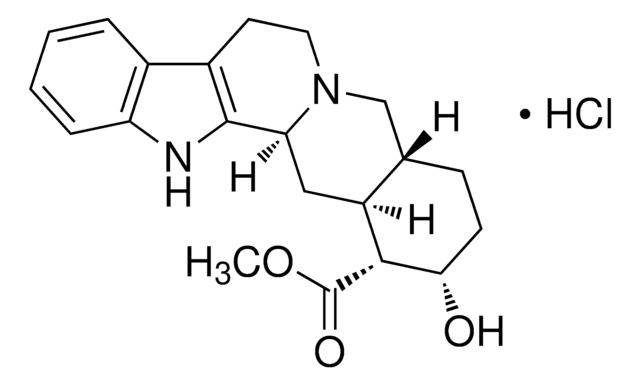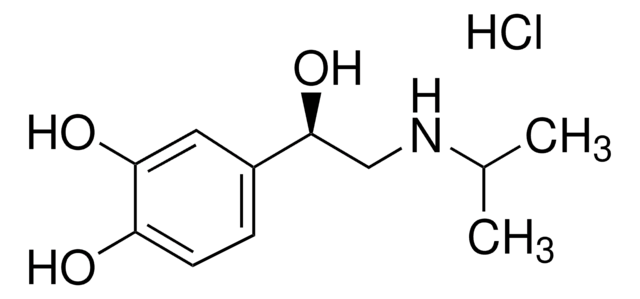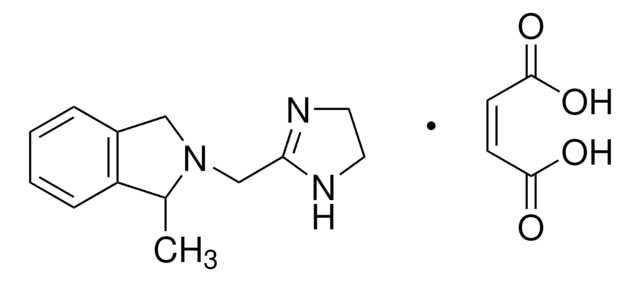Y3125
Yohimbine hydrochloride
≥98% (HPLC), powder, α2-adrenergic receptor antagonist
Synonym(s):
17-Hydroxyyohimban-16-carboxylic acid methyl ester hydrochloride
About This Item
Recommended Products
product name
Yohimbine hydrochloride, ≥98% (HPLC), powder
Assay
≥98% (HPLC)
form
powder
color
white to off-white
mp
288-290 °C (dec.) (lit.)
solubility
H2O: 10 mg/mL
SMILES string
Cl.COC(=O)[C@H]1[C@@H](O)CCC2CN3CCc4c([nH]c5ccccc45)C3CC12
InChI
1S/C21H26N2O3.ClH/c1-26-21(25)19-15-10-17-20-14(13-4-2-3-5-16(13)22-20)8-9-23(17)11-12(15)6-7-18(19)24;/h2-5,12,15,17-19,22,24H,6-11H2,1H3;1H/t12-,15-,17-,18-,19+;/m0./s1
InChI key
PIPZGJSEDRMUAW-VJDCAHTMSA-N
Gene Information
human ... ADRA2A(150) , ADRA2B(151) , ADRA2C(152)
Looking for similar products? Visit Product Comparison Guide
Application
- used to study its in vitro antiviral, antibacterial and antifungal activities and cytotoxicity
- used as a tyramine receptor blocker to oppose the effects of increased tyramine in relation with flight initiation and maintenance deficits in experimental flies
- used alone and as well as with brimonidine to study the neuroprotective effect of brimonidine in the presence of glutamate-induced neurotoxicity, oxidative stress and hypoxia on in vitro cultures of purified rat retinal ganglion cells
Biochem/physiol Actions
Features and Benefits
Signal Word
Danger
Hazard Statements
Precautionary Statements
Hazard Classifications
Acute Tox. 2 Inhalation - Acute Tox. 2 Oral
Storage Class Code
6.1A - Combustible acute toxic Cat. 1 and 2 / very toxic hazardous materials
WGK
WGK 3
Flash Point(F)
Not applicable
Flash Point(C)
Not applicable
Personal Protective Equipment
Certificates of Analysis (COA)
Search for Certificates of Analysis (COA) by entering the products Lot/Batch Number. Lot and Batch Numbers can be found on a product’s label following the words ‘Lot’ or ‘Batch’.
Already Own This Product?
Find documentation for the products that you have recently purchased in the Document Library.
Customers Also Viewed
Articles
Learn about alpha-2 adrenoceptor and its subtypes, mediated responses, and applications of agonists. Included is a list of available products and a comparison table.
Our team of scientists has experience in all areas of research including Life Science, Material Science, Chemical Synthesis, Chromatography, Analytical and many others.
Contact Technical Service











